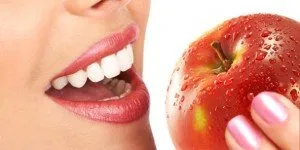How to Reduce Tooth Sensitivity?
Tooth sensitivity can affect one or more teeth. It’s most common when you eat or drink something hot, cold, sweet, or sour. The pain can be sharp and sudden and can shoot deep into the nerve endings of your teeth. You may get sensitive teeth when your gums recede and expose the surface beneath, called the dentin. This soft layer makes up the inner part and roots, which have thousands of tiny tubes that lead to the tooth’s nerve center (the pulp). These channels allow the trigger — for example, the hot, cold, or sweet food — to reach the nerve in your tooth, which results in the pain you feel. Here are ways to find relief and reduce your tooth sensitivity: Try toothpaste made for sensitive teeth – Several brands of toothpaste on the market are designed to help people with sensitive teeth. Some pastes contain an active ingredient called potassium nitrate, which helps to block the tiny tubules in the dentin. They don’t work for everybody, but it’s usually a good place to start. Change the way you brush – If you’re not using a soft toothbrush, if you’re scrubbing your teeth vigorously, or if you’re not brushing for a full two minutes, then you’re not doing any favors for your sensitive teeth. Hard brushing can actually wear away enamel, increasing the sensitivity in your teeth. Changing your brushing habits will definitely pay off. Avoid acidic food and drink – Exposure to red wine, pop, fruit juices and acidic foods—such as oranges and pickles—can put your enamel under constant attack. Limit these foods and drinks, and try to brush about 20 minutes after eating them. Ask your dentist about a paint job – If you’re not having much luck with desensitizing toothpaste, talk to your dentist about painted-on barriers. Desensitizing agents like fluoride varnish or even plastic resins can be applied to the sensitive areas of your teeth. Put a stop to tooth grinding – If you’re grinding your teeth when you’re tense, you could be wearing away enamel and giving yourself a sensitivity problem. Treat your receding gums – Normally the root of your tooth is covered up by your gum tissue. But if you have some gum recession, caused by gum disease or even hard brushing, then the root will be exposed and the cementum can be worn away. Your dental care provider may be able to rebuild or restore your receding gums. If you still have discomfort, call Expressions Dental™. There may be a procedure that can help.










